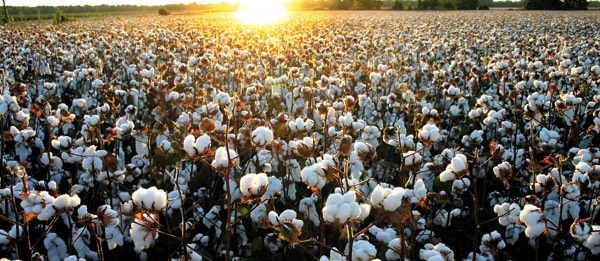
'Unprecedented times' for farmers, ginners
Mid-South farmers and ginners are coping with “unprecedented times” as they try and adjust business models to high commodity prices, higher production/operating costs, and changing demands for crops, says David Blakemore, Campbell, Mo., producer/ginner/warehouseman.

Mid-South farmers and ginners are coping with “unprecedented times” as they try and adjust business models to high commodity prices, higher production/operating costs, and changing demands for crops, says David Blakemore.
The Campbell, Mo., producer/ginner/warehouseman was part of a panel discussion at the annual meeting of the Southern Cotton Ginners Association held in conjunction with the Mid-South Farm & Gin Show.
“I’ve seen three cotton depressions in my short career,” he said. “We’ve been through many up and down cycles — the up cycle we’re in now is just another, and it will change. The next cotton depression will probably be sooner rather than later.”
 Borrowing from a Bob Dylan song, “The Times They Are A’Changin’", Blakemore, who was 2010 SCGA Ginner of the Year, says, “The people we do business with are also changing — there is a generational shift going on in agriculture, with a combination of older farm customers and newer farmer customers.We have to adapt to new business models that will involve ongoing adjustments to the crops we grow and the acres we plant.
Borrowing from a Bob Dylan song, “The Times They Are A’Changin’", Blakemore, who was 2010 SCGA Ginner of the Year, says, “The people we do business with are also changing — there is a generational shift going on in agriculture, with a combination of older farm customers and newer farmer customers.We have to adapt to new business models that will involve ongoing adjustments to the crops we grow and the acres we plant.
“Prices, too, are changing. Commodity prices are higher, but they are coupled with higher input costs and higher land costs. Cash rent is increasing, regardless of whether it’s dryland or irrigated ground.”
Everyone will need to play close attention to their balance sheets, Blakemore says.
“Improving your balance sheet does not necessarily mean retained earnings. Watching your balance sheet means more than your borrowing ability — it's important to have cash on your balance sheet. You have to be prepared for a future that will likely get much worse."
In 1989, Blakemore notes, the U.S. ginned 12 million bales; by 2005, that had jumped to 26 million bales; but in 2009, with the broad scale switch of acres to corn and soybeans, cotton bales ginned had dropped back to 11.7 million, almost where they were 20 years earlier.
“Cotton will come back,” he says, “but not like before. Cotton came back in North Carolina and Georgia after eradication of the boll weevil. The two states grow more cotton now than they did at the bottom in the late 1980’s and early 1990’s.
“But, we’ve lost infrastructure. The market may make cotton stage a comeback of sorts in the short run, but we have to be prepared for a market that can get much worse in the longer term. Look, for example, at what happened to our textile industry."
Blakemore says his ginning operation is “doing what every gin should be doing — everything we can to maximize our value to the grower.” Among other things, he says, “We’re bringing gin trash back into the gin and cleaning it — all with the ultimate goal of providing the most value we can to the grower.”
Greater reluctance to return to cotton
“The changes in Mid-South agriculture in the last five years have been more severe than anything I could ever have imagined in my farming career,” Marianna, Ark., farmer/ginner Larry McClendon said in the panel discussion.
The monumental shifts to grains have also brought changes in operational lifestyles, he says.
“Because of higher costs and greater risks, there is a real reluctance of many farmers to get back into cotton after growing grains. Growing grains is easier, with less management and less financial risk — production cost increases for cotton have been pretty dramatic.
 “I don’t think we will ever regain all the cotton acres we had a few years back. It’s just too expensive for a farmer to flip-flop between grains and cotton.”
“I don’t think we will ever regain all the cotton acres we had a few years back. It’s just too expensive for a farmer to flip-flop between grains and cotton.”
In the process of losing cotton acres in recent years, McClendon says, “We’ve also lost personnel, and demand for services and facilities has changed. In the past, most grain farmers relied on community elevators; now, many of them have their own on-farm storage facilities. Continuing consolidation and closings have resulted in fewer community gins and more centralized facilities.”
Mills in the eastern U.S. once consumed 80 percent of the nation’s cotton, with about 20 percent exported, he notes.
“Now, that situation is reversed. When I first started farming, my competition was cotton producers in other areas of the U.S. cotton belt. Then, as cotton spinning shifted to overseas mills, my competition was foreign cotton growers. Now, my competition is soybeans and corn.”
In the Mid-South, McClendon says, “I think we will see farms continue to get much larger. We’ll see a continuing reduction in government farm supports, and as a consequence forward pricing will be a mainstay of management. Acreages from year to year will be very volatile and highly contingent on price.”
The acreages of individual farms will increasingly be tied to harvest capacity, he says.
“With each revolution in picker/moduling systems, we’ve almost doubled our harvesting capacity. When a grower is investing half a million dollars in a new moduling picker, he has to be sure he can utilize that machine as efficiently as possible, and he will more and more center his operations around what he can harvest. Technology will increasingly be a key component of farming operations, and in everything, we’re in for a lot faster ride than ever before.”
With increasing costs of production, land, rents, and equipment, McClendon says, “It will be increasingly challenging to farmers to finance their crops, with more collateral required and tighter lending limits. With higher costs and higher capitalization requirements, it will be more difficult for younger farmers to get into the business and for older farmers to facilitate the transition to the next generation.
“If somebody’s got enough money to start in cotton farming, they’ve got enough money to quit.”
Changes to facilitate trade
In travels to Central America and China last year, Richard Kelley, Burlison, Tenn., farmer ginner and 2010 SCGA president, says it was “an eye-opener to visit with our good customers — particularly so in China, to see how advanced they area technologically.
“They love our cotton, and they want our cotton, but they often can buy cotton closer and cheaper from other countries,” says Kelley, who was another of the panelists.
“We may need to change our shipping and warehousing procedures in order to give them the quick delivery they want so they can make a quick turnaround in their processing operations.”
“If we don’t change and get better, our competitors will slip in and beat us to the punch.
“These are unprecedented times in terms of cotton prices and demand,” Kelley notes, “and because cotton is now worth so much more and risk and liability so much greater, there are additional decisions we ginners must make in terms of insurance for cotton on gin yards.
“We will have to expand our gin storage areas in order to satisfy insurance requirements and we may need to consider transferring some of this insurance responsibility to producers.
Cotton yields haven't kept pace
For decades cotton prices have been basically stagnant, and when they started increasing there was an accompanying rise in production costs that “put us in a squeeze,” Mississippi farmer/ginner Kenneth Hood said in the panel discussion.
And while corn and soybeans have seen significant advances in average yields, cotton yield advances have not been comparatively good, he says.
Nor do USDA projections out to 2020 show a very large increase in cotton yields.
“Farmers are going to have to continue to get larger if they’re going to be able to buy half-million-dollar cotton pickers,” Hood says.
Prices for cotton may be high now, “But we all have learned in this business that what goes up can pretty quickly come back down. We’ve all been there before.”
With budget troubles and the focus on cuts in government programs, he says, “I think we will see supports for farm programs continue to erode.”
In 1975, he says, “the module builder increased the farmer’s harvesting efficiency and allowed us to extend the ginning season. Now, we’re moving to yet another technology, pickers with on-board module builders, that will further increase efficiency. “But, while the costs of growing cotton have kept going up, our income from the crop has remained basically stagnant. If farmers are going to buy these expensive new cotton pickers, their farming operations are going to have to get larger.
“But, while the costs of growing cotton have kept going up, our income from the crop has remained basically stagnant. If farmers are going to buy these expensive new cotton pickers, their farming operations are going to have to get larger.
Our challenge is to find ways to improve yields, to deal with high energy costs, to adopt new technologies, to compete with other crops for land and water, increase global demand and retail consumption, and to find ways to stay competitive with man-made fibers. And I think we will see even fewer gins ginning larger amounts of cotton.”
About the Author(s)
You May Also Like



